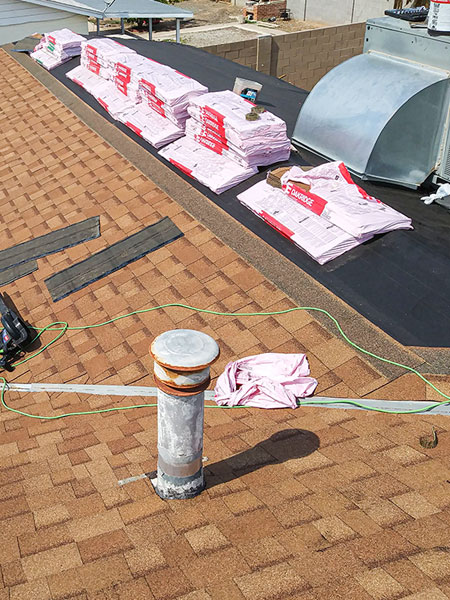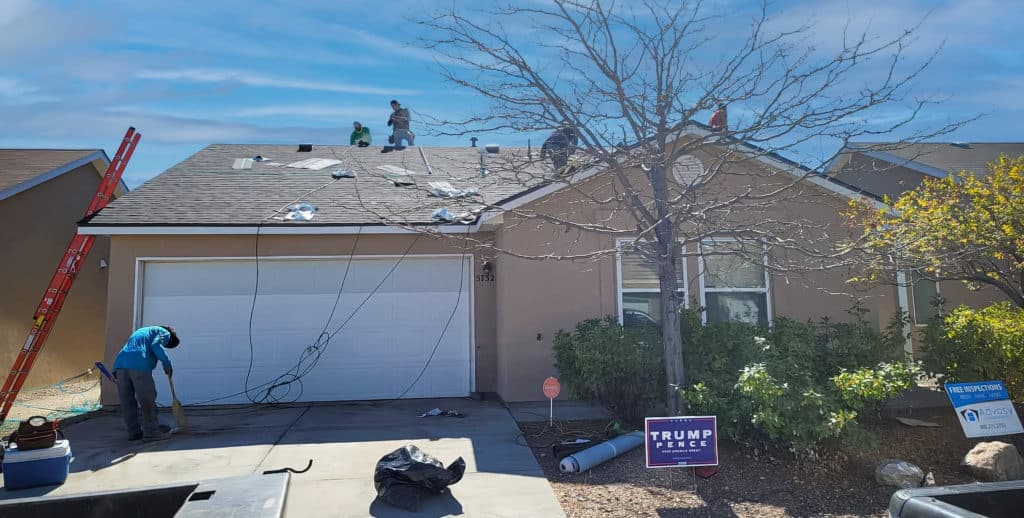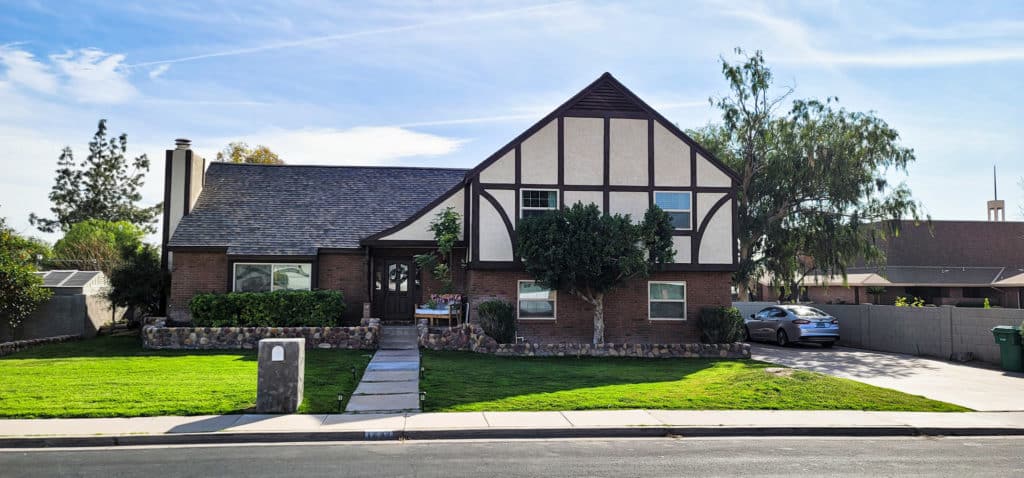Are you tired of feeling like you’re melting in the scorching heat of Phoenix, Arizona? Do you find yourself cranking up the AC to the max, only to see your energy bills skyrocket? Well, there’s a solution to your problem – cool roofs. Not only do they keep your home or business cooler, but they also save you money and benefit the environment. So, let’s dive into the science of cool roofs and how they can help you beat the heat in Phoenix.
Cool roofs work by reflecting sunlight and heat back into the atmosphere instead of absorbing it. This means that less heat is transferred into the building, resulting in a cooler interior temperature. The materials used in cool roof technology are specially designed to be highly reflective, with some even having the ability to emit infrared radiation. This combination of reflective and emissive properties makes cool roofs highly effective at reducing heat absorption and keeping your building cool. So, if you’re tired of sweating it out in the Arizona heat, a cool roof may just be the solution you’ve been looking for.
The Basics of Heat Absorption and Reflection
You might not realize it, but your roof is absorbing a lot of heat, which is why understanding the basics of heat absorption and reflection is crucial for keeping your home cool and comfortable in Phoenix. Heat transfer mechanisms, such as conduction, convection, and radiation, can cause your roof to absorb heat from the sun and transfer it into your home. This can lead to uncomfortable indoor temperatures, increased energy bills, and even damage to your roof over time.
One way to combat this is by using cool roofs, which have a higher solar reflectance. This means that they reflect more of the sun’s energy back into the atmosphere, rather than absorbing it into your home. Cool roofs can be made from materials such as reflective coatings, tiles, or shingles, and can significantly reduce the amount of heat transferred into your home. By understanding the basics of heat absorption and reflection, and choosing the right materials for your roof, you can keep your home cool and comfortable in the hot Arizona sun.

Materials Used in Cool Roof Technology
Utilizing specialized roofing materials can effectively reduce the amount of solar heat absorbed by a building’s roof, resulting in lower energy costs and a more comfortable indoor environment. Cool roofs are made from materials that have a high solar reflectance and thermal emittance, which means they reflect sunlight and release absorbed heat more efficiently than traditional roofs.
One of the most popular materials used in cool roof technology is white or light-colored coatings, which reflect up to 90% of sunlight and reduce roof temperatures by up to 50 degrees Fahrenheit. These coatings are cost-effective and easy to apply, but they may require more frequent maintenance than other materials. Other options include tiles, shingles, and metal roofs that have been coated with reflective materials. While these may be more durable and require less maintenance, they can also be more expensive than coatings. Ultimately, the choice of roofing material will depend on the building’s specific needs and budget, but opting for a cool roof can lead to long-term savings and a more comfortable living or working space.
The Installation Process
When installing a cool roof, it’s important to carefully follow the manufacturer’s instructions and hire a professional contractor who is experienced in this type of roofing. The installation process typically involves cleaning and preparing the roof surface, applying a primer, and then installing the cool roof material. It’s important to ensure that the roof is free of debris, dirt, and other contaminants before starting the installation process. The primer helps the cool roof material adhere properly to the roof surface and provides an additional layer of protection against the elements.
Cost considerations are an important factor to keep in mind when installing a cool roof. While cool roofs tend to cost more upfront than traditional roofing materials, they can provide long-term cost savings by reducing energy bills and extending the life of the roof. Additionally, cool roofs often require less maintenance than traditional roofs, which can further reduce costs over time. It’s important to work with a professional contractor who can help you choose the right cool roof material for your needs and budget, and who can provide guidance on maintenance requirements to ensure that your cool roof continues to provide energy savings and protection for years to come.
Energy Savings and Environmental Benefits
By choosing a cool roof, you can significantly decrease your energy consumption and reduce your carbon footprint. Cool roofs reflect sunlight and absorb less heat than traditional roofs, which reduces the amount of energy needed to cool your home or building. This means lower energy bills and a smaller environmental impact. In fact, studies have shown that cool roofs can reduce a building’s energy use by up to 20%. This not only benefits individual homeowners and businesses, but also contributes to larger green initiatives aimed at reducing energy consumption and combating climate change.
In addition to the energy savings, cool roofs also have a positive economic impact. By reducing energy demand, cool roofs can help to avoid the need for new power plants and other costly infrastructure projects. This can lead to lower electricity prices and a more stable energy grid. Cool roofs also have a longer lifespan than traditional roofs, which means less frequent repairs and replacements. All of these factors make cool roofs a smart investment for both individuals and communities looking to save money and reduce their environmental impact.

Cool Roofs for Residential Properties
If you’re looking for a way to keep your home comfortable and save on energy costs, consider installing a cool roof. Cool roofs are designed to reflect sunlight and absorb less heat than traditional roofs, which can help keep your home cooler and reduce the need for air conditioning. This can lead to significant energy savings and lower utility bills.
But cool roofs aren’t just good for your wallet – they’re also good for the environment. By reducing the amount of energy needed to cool your home, you’ll be reducing your carbon footprint and helping to combat climate change. Plus, cool roofs can last longer than traditional roofs and require less maintenance, making them a cost-effective choice in the long run. So if you’re looking for a way to stay cool and save money, a cool roof might be the perfect solution for your home.
Cool Roofs for Commercial Properties
Installing a cool roof on your commercial property can not only save you money on energy costs, but also help reduce your carbon footprint and contribute to a healthier environment. Cool roofs are designed to reflect sunlight and absorb less heat than traditional roofs, which can result in energy savings of up to 15%. This means that you can save money on your monthly energy bills, making a cool roof a cost-effective investment in the long run.
In addition to being cost-effective, cool roofs also require less maintenance than traditional roofs. The reflective coating used on cool roofs can prevent damage from UV rays and weathering, which can extend the lifespan of your roof. And because cool roofs absorb less heat, they can reduce the strain on your HVAC system, which can lead to fewer repairs and replacements down the line. By choosing a cool roof for your commercial property, you can save money on maintenance costs while helping to create a more sustainable future.


